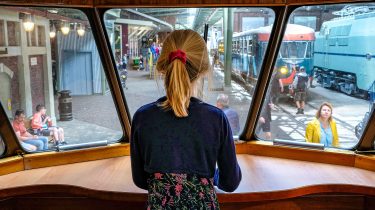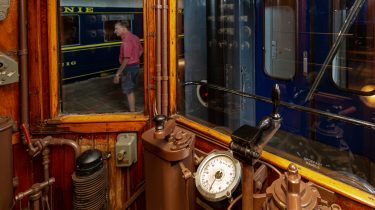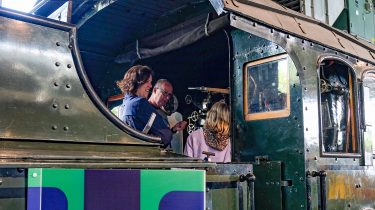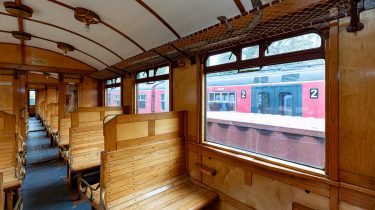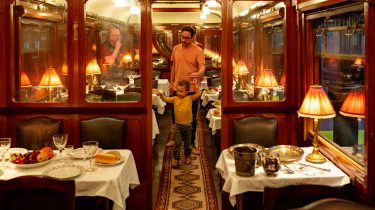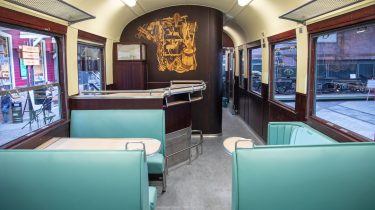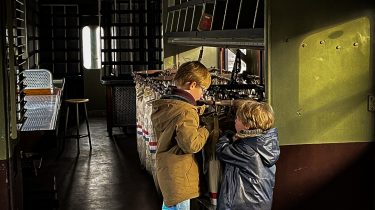Open Train Festival
- Activity
- Event
- Date
- 20 Sep 2024 t-m 22 Sep 2024
- Age
- All ages
Welcome to the Open Train Festival!
Strolling around the museum’s trains means travelling back in time. The collection features full-size locomotives and superb carriages in all types, sizes and colours. Where did these trains run? Why do they look the way they do? And how did they come by those special names? This weekend, you can board more than 40 trains and discover their secrets. Tour guides will be present on many of them, ready to tell you all about these special collection items.
Each train has its own nickname
Besides an official number, trains often have great nicknames as well. Some of these are fairly straightforward: the green steam locomotive SS326, for instance, is called Grote Groene (Big Green), while the blue locomotives of the NBDS were called Blauwe Brabanders (Blue Brabanders). By contract, other nicknames are less obvious. Usually, it was a specific characteristic that led to a special name. NS 2104, for instance, bears the name Blikken Tinus (Tinny Tinus) because of the rattling noise it makes. The 6300 series of steam locomotives is known for being really exhausting for a stoker to work, which is why it’s called De Beul (The Executioner). The box-like shape of 500/600 locomotive series led to its nickname Bakkie (Boxy). But the most popular type of nickname refers to animals: among other types, the railways had an Arend (Eagle), Leeuw (Lion), Wild Varken (Wild Boar), Kikker (Frog), Platluis (Flat Louse), Ezeltje (Little Donkey), Jumbo (this one’s obvious), Potvis (Whale) and of course the Hondekop (Dog’s Head)!
Showing one’s colours
One striking thing about the museum is the many different colours of the trains. It looks like a big mishmash, but in fact there’s a logic to it. To begin with, steam locomotives were mostly green or black. This was simply for practical reasons: dirt was harder to see on these surfaces. When the first streamlined models appeared, the railway companies didn’t only try out special designs, but striking colours as well, such as grey with red and turquoise. After World War II, each type of stock was given its own colour: streamlined electric stock was painted green, while separate electric locomotives and carriages were dark blue and diesel-electric stock was red. Goods trains were all brown. In 1968, NS adopted a new corporate identity, after which all passenger trains changed to the now-familiar yellow with blue. The museum trains, however, have been restored to their original colour as much as possible.
Jumble of digits and letters
Mat ’54, NS 20, SSJ 1620 and so on: almost all locomotives and carriages have a number. Thanks to this unique numbering system, it was always possible to record precisely where a locomotive was located and what condition it was in. It was also useful when drawing up train schedules. In the early days, there were various railway companies with their own rolling stock and own numbers. SS 326, for instance, stands for Staatsspoorwegen (State Railways) number 26 of the 300 series. After the merger of all the railway companies into NS, all stock was renumbered to ensure that no two trains had the same number. From that moment on, new locomotive designs have been assigned a four-digit number. The first digit stands for electric (1) or diesel-electric (2). The second set of digits is the serial number. Each new design series gets a new number. The last two digits stand for the specific locomotive. So, NS 2215 is diesel locomotive number 15 of the 200 series. Shunting engines are assigned three-digit numbers. What’s more, carriages and goods wagons are all assigned an individual number as well. To make things even more complicated, the international nature of goods transport means that all the goods wagons are also assigned a European wagon number!
Plan and Mat
In addition to a number or name, trains and carriages are often assigned a Plan or Mat designation. The term ‘Plan’ derives from the NS book-keeping system. Each budget year is given its own letter, so you can see in which period the stock was ordered. As a result, a single series may be assigned different ‘plan years’ if the costs of the series are entered into the books in different years. Besides ‘Plan’, you often also hear the term ‘Mat’. This is an abbreviation for Materieel (rolling stock). The number that follows it indicates the year in which the stock was designed – but this doesn’t automatically mean that it was also built in that year. Complicated? Let’s take the museum’s Hondekop as an example. This has the designation Mat ’54, Plan Q and NS 386. The train was built in 1962, which corresponds to the Plan Q year. The design originates from 1954 (which is where we get Mat ’54) and the train also has its own specific number: 386.
Work on the track
There will be no train to our museum on Friday and Saturday (7 and 8 April) due to construction work. Take the public transport bicycle or come by bus. On Easter Sunday 9 April and Easter Monday 10 April, the museum shuttle will run between Amersfoort Centraal – Utrecht Maliebaan (with stops in Den Dolder and Bilthoven).
Timetable: Departure from Amersfoort every hour from 9:51 am, Den Dolder 9:58 am, Bilthoven 10:01 am, arrival Utrecht Maliebaan at 10:10 am. Then every hour. Departure from Utrecht Maliebaan towards Amersfoort every hour from 9.25 am.
